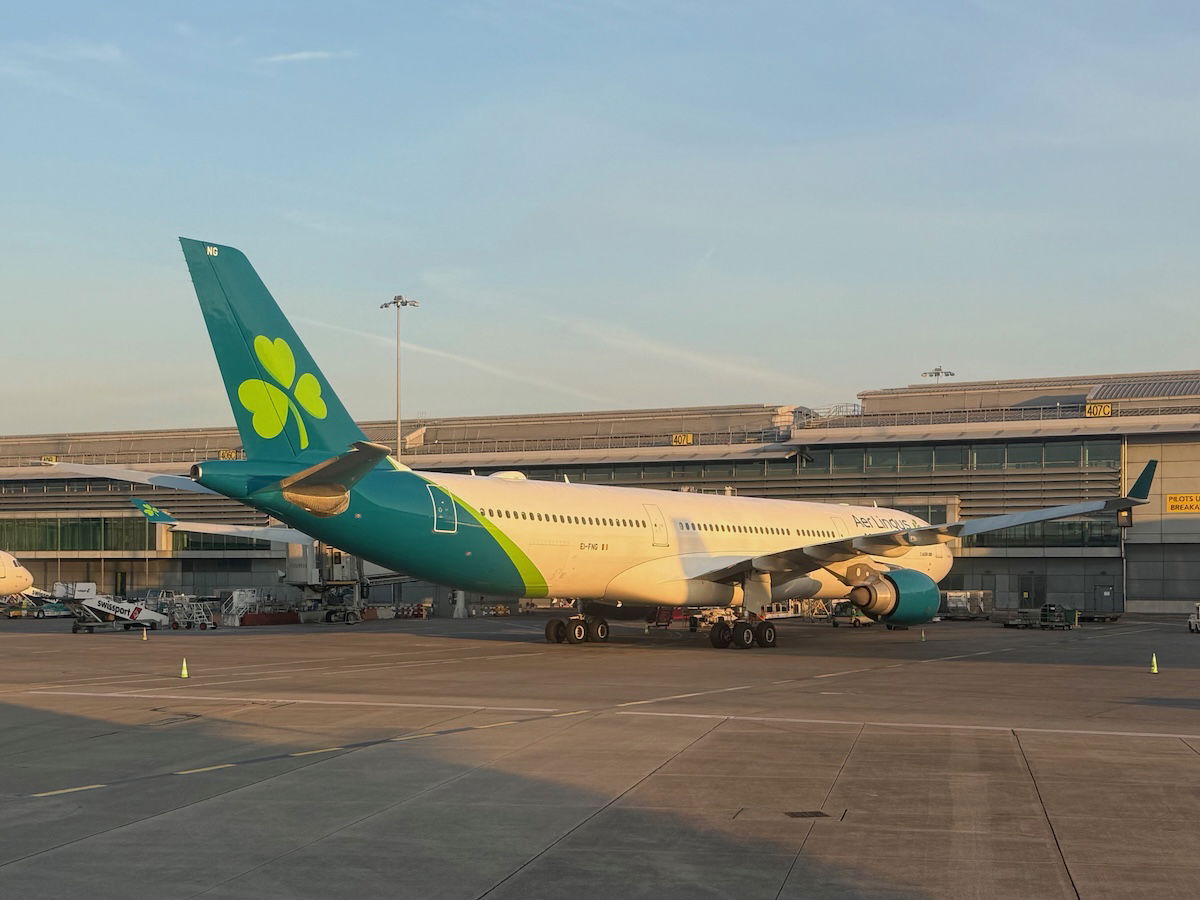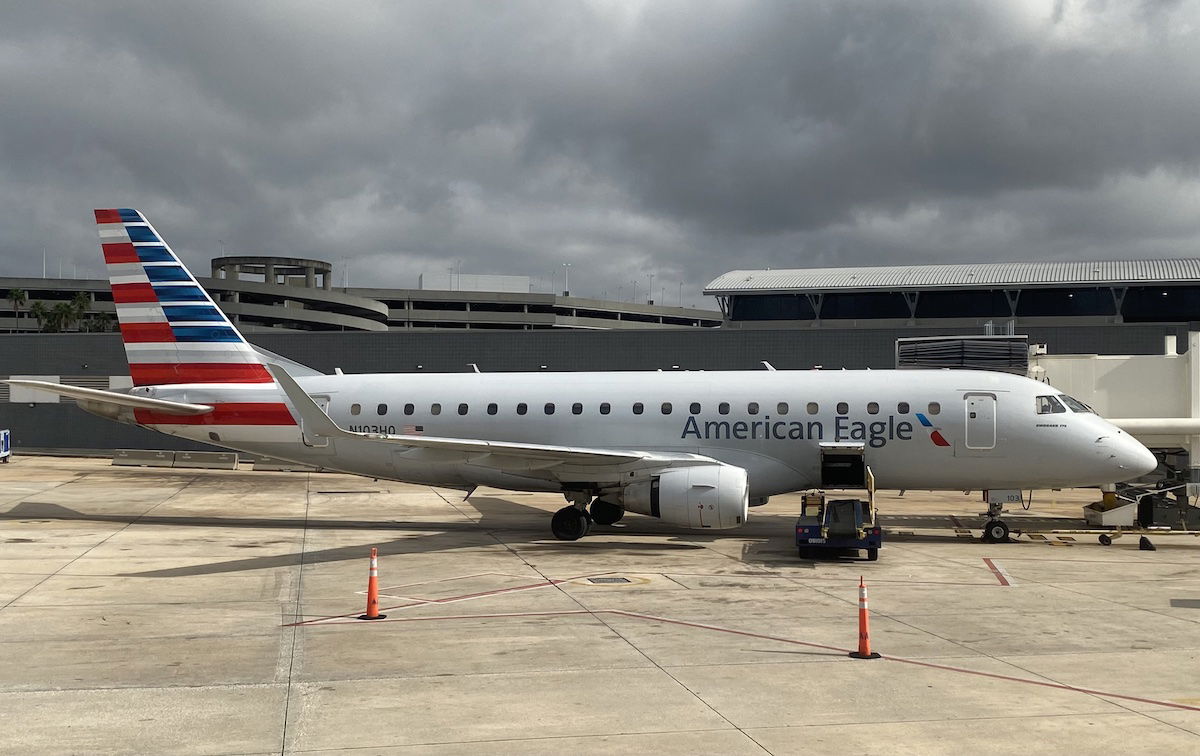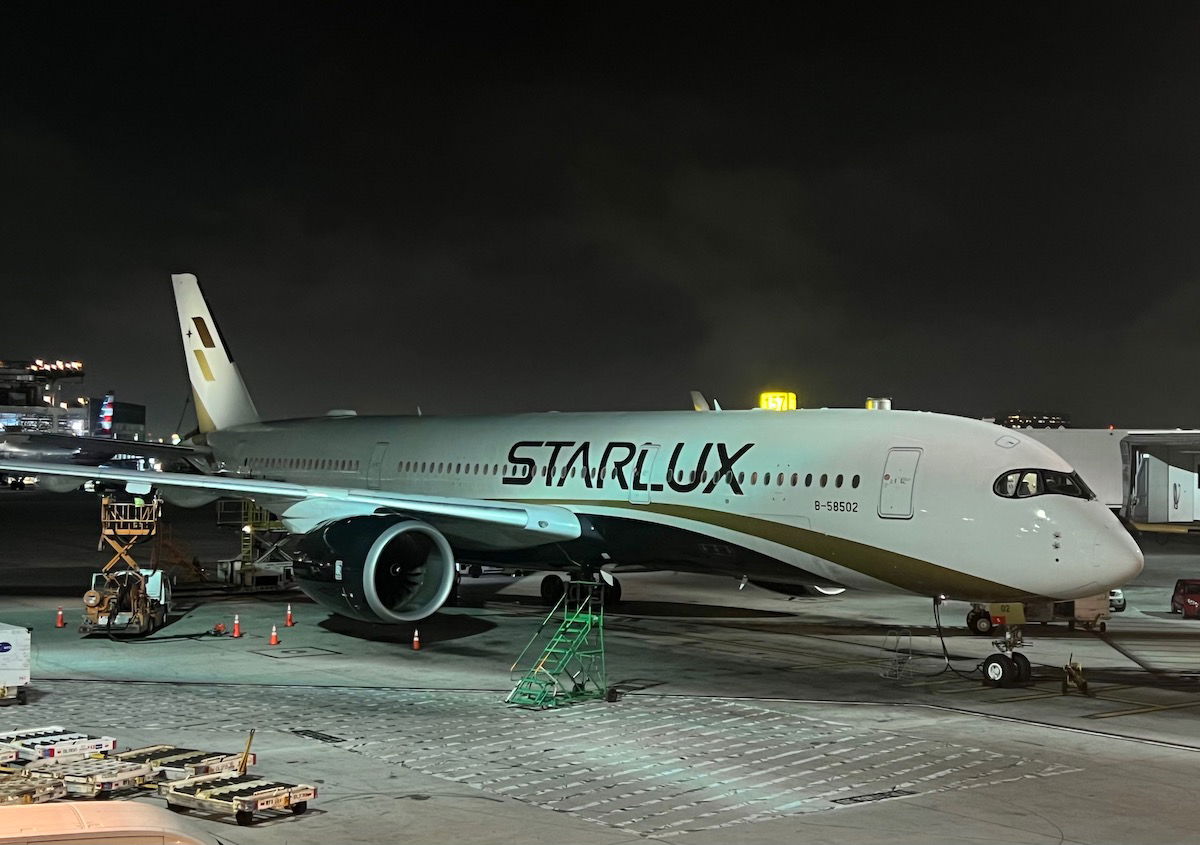Here’s a fun topic for aviation geeks (so if you’re not one, feel free to skip this post)…
In this post:
The basics of airline callsigns, and how they’re chosen
When pilots and air traffic controllers communicate, they have a callsign that they use to be identified.
In general aviation, that callsign is just the aircraft’s registration code, so it’s always the same for a particular aircraft. For example, if the plane has the registration code N111PG, it would be spoken as “November One One One Papa Golf.”
Meanwhile for commercial aircraft, the callsign consists of a company identifier plus the flight number. In some cases that company identifier is simply the company’s name, while in other cases, a different callsign is used. For example, for American, Delta, and United, the company identifier is simply the airline name, so American flight 100 would be spoken as “American 100.”
In some situations, airlines choose callsigns that are different from the company name, and this can be for a variety of reasons. Callsigns need to be approved by the International Civil Aviation Organization (ICAO), with some important considerations:
- A callsign has to be short, ideally no more than three syllables
- A callsign has to be easy to pronounce in English and other ICAO languages
- A callsign has to be unique, not similar to the callsigns of other airlines, to avoid confusion

Some of the most interesting airline callsigns
While most airlines simply use their name as their callsign, there are also some airlines that don’t, and there are some names that I find to be particularly fun. In this post, I’d like to share my favorite airline callsigns, with a little backstory on how they were chosen (as I understand it). In no particular order…
Aer Lingus’ “Shamrock” callsign
Aer Lingus’ callsign is “Shamrock,” and that’s because the shamrock is the national symbol of Ireland. It’s a key part of the airline’s corporate identity, down to the shamrock being featured on the tails of Aer Lingus planes. Do note that Aer Lingus’ UK subsidiary is on a separate air operator certificate, and uses the callsign “Green Flight.”

British Airways’ “Speedbird” callsign
British Airways’ callsign is “Speedbird,” and I’d argue it’s perhaps the most iconic callsign out there. The origin of this dates back to British Airways’ predecessor, Imperial Airways, which used the stylized bird logo. British Airways has been using the callsign since it was founded in 1974 (as a combination of predecessors).
While this is of course a creative callsign, it has a practical use as well. “British Airways” would’ve been too long of a callsign, and “British” would’ve likely been too generic. For example, British Midland (which ended up being merged into British Airways) used “Midland” as its callsign, to avoid confusion.
Republic Airways’ “Brickyard” callsign
Republic Airways’ callsign is “Brickyard,” and it’s probably the coolest callsign you’ll find at an airline in the United States. The callsign is a tribute to the company’s headquarters in Indianapolis, also home to the Indianapolis Motor Speedway. The course was initially paved with three million bricks, and nicknamed “The Brickyard.”
For those not familiar, Republic operates flights on behalf of the regional subsidiaries of the major US carriers, so this is among the most common callsigns you’ll hear on air traffic control frequencies in the US.

China Airlines’ “Dynasty” callsign
China Airlines’ callsign is “Dynasty.” It’s my understanding that the Taiwan-based carrier had to choose a non-obvious callsign both to avoid confusion (given the number of airlines with “China” in their name), and also with the intent of differentiating it from mainland China.
So, where did the dynasty term come from? China Airlines uses this branding pretty widely, with its frequent flyer program even being named Dynasty Flyer, and it’s intended to reflect the history of Taiwan.
Starlux Airlines’ Starwalker callsign
Starlux Airlines’ callsign is “Starwalker.” As I understand it, this simply comes down to the company’s founder being a huge Star Wars fan, which is why many things about the airline have space branding. I believe there’s no reason the airline couldn’t have chosen “Starlux” as its callsign, but the company’s founder is really into this stuff, so he likes to mix things up (he’s a huge aviation geek, and even operates flights as a captain).

Atlas Air’s Giant callsign
Atlas Air’s callsign is “Giant.” Huh, say what? For those not familiar, Atlas Air is a cargo and charter airline, and while it doesn’t operate regularly scheduled commercial flights, it is a big operation.
The company’s callsign may be a reflection of one of two things. For one, perhaps it reflects the big planes the airline operates, as the company is the world’s largest operator of the Boeing 747. Second, the company’s name comes from Greek mythology, where “Atlas” was a titan of great strength, so that may also explain the “giant” callsign.
European Air Transport’s “Postman” callsign
European Air Transport’s callsign is “Postman.” For context, this is one of DHL’s European subsidiaries operating cargo flights, so it’s a pretty fitting callsign, eh?
Bottom line
Airlines have callsigns that they use to communicate with air traffic control. While most airlines simply use their name as their callsign, that’s not always the case. In some situations a different name has to be chosen for practical reasons, while in some cases airlines want to get creative. I love when airlines have some fun with this, so I figured it was worth a post.
What’s your favorite airline callsign?





Here in Australia our local Tiger Airways line (which died during COVID) had the callsign "Go-Cat" as in the cat food brand :)
Shamrock is a great call sign for Aer Lingus, and it is certainly very closely associated with both the airline and the country. However, if you want to say that something is THE national symbol of Ireland, I think you'll find it's the harp. It's what's on passports and other official documents. I enjoyed this article, and hope you don't mind a friendly clarification about Irish symbols. Ireland is very proud that it is the...
Shamrock is a great call sign for Aer Lingus, and it is certainly very closely associated with both the airline and the country. However, if you want to say that something is THE national symbol of Ireland, I think you'll find it's the harp. It's what's on passports and other official documents. I enjoyed this article, and hope you don't mind a friendly clarification about Irish symbols. Ireland is very proud that it is the only country in the world that has a musical instrument as it's national symbol.
DAGOBERT (Quick Air from Germany) was the worst one I had to use. Always felt stupid saying it.
KM Malta Airlines is Skyknight
"it’s intended to reflect the history of Taiwan."
Taiwan never had a dynasty of its own.
The indigenous people never had a dynasty, they were occupied by the Han, Qing, Dutch, Japanese, KMT, etc.
This a fake Eskimo.
Back in the days when China Airlines was stuffing airplanes into the ground on a seemingly weekly basis, one wag suggested their callsign stood for “Die Nasty”….
(Not to be confused with today’s airline, which is perfectly safe and one which I happily fly every year)
I always thought Air Florida had a good call sign, “Palm”…. A long time ago FedEx was Federal Express and used the call sign “Express”…. My all time favorite was Canadian Pacific, CP Air, that used the call sign “Empress”. I wish that one was still around.
Norwegian Air Sweden is "Rednose" Formerly used by Norwegian UK.
I miss America West's 'Catcus'
Sully made "Cactus' famous.
GoJet (a United Express carrier) = "Lindbergh"
Also, Porter Airlines have two different callsigns depending on aircraft types, I believe because the are operated by different subsidiaries. When they got the E195s, those remained with the existing "Porter Air" callsign, while the old Dash 8-Q400 fleet got changed to a "DashPort" callsign. To the public it's all one airline, without a mainline/express distinction.
Can’t forget about Pan Am’s Clipper callsign. I regret not being able to fly them when they were still around.
Atlas Air is 100% named for the Titan who was cursed to hold up the globe. It's literally their logo!
ValuJet's was "Critter"
Starlux couldn't use STARLUX as its callsign because Comlux Aruba already occupied it.
Great read to start a Monday morning. My all time favorite has to be SpeedBird!
Wonder how PSA airlines got Blue Streak?
Love this article.
Atlas is a Titan (Giant) condemned to hold up the heavens or sky for eternity after the Titanomachy according to greek Mythologie.
Atlas is also the mythical Greek Titan holding up the sky, which to me feels a more poetic explanation for "Giant" than "we fly big planes".
I suspect Atlas got "Giant" because it shares a name (or is named after?) Atlas, a Greek Titan who was doomed to holding up the heavens on his shoulders; this is also reflected in the Atlas Air logo as seen on the tails of its jets.
Speaking of callsigns, years ago, there was an easy listening radio station in San Luis Obispo, California. Its callsign was K-C-O-C. And, its slogan was "in the air, everywhere." Don't believe it? Look it up.
And here are some more interesting ones:
Cebgo (Cebu Pacific subsidary) - Blue Jay
Zipair - Zippy
Scoot - Scooter
Kalitta Air - Connie (fun fact - named after founder & CEO Conrad Kalitta)
China Cargo Airlines - Cargo King
BermudAir - Gosling
*subsidiary
I listen to ATC live (usually DCA) and hear brickyard (republic ) often and only today learned the origin. Thank you Ben
You forgot Springbok!
I cannot, for the life of me, fathom why airline call signs insist on being the most theatrical syntaxes ever conceived. “Speedbird,” “Cactus,” “Shamrock,” half of them sound like rejected stage names for a washed up magician who performs only on Tuesdays, and the other half sound like someone sneezed into a radio and ATC just decided to roll with it. And yet, pilots say them with such solemnity, as if invoking ancient spirits: “Speedbird...
I cannot, for the life of me, fathom why airline call signs insist on being the most theatrical syntaxes ever conceived. “Speedbird,” “Cactus,” “Shamrock,” half of them sound like rejected stage names for a washed up magician who performs only on Tuesdays, and the other half sound like someone sneezed into a radio and ATC just decided to roll with it. And yet, pilots say them with such solemnity, as if invoking ancient spirits: “Speedbird 127, cleared for takeoff.” Oh yes, absolutely, take flight, noble avian metaphor, go forth and deliver passengers their lukewarm lasagna.
And speaking of lasagna, it was exactly that greasy, cheese slicked culinary brick that pushed me into going vegan the night before my trip to Milan.
Going vegan, I decided, was the only logical path forward, and I maintained this undercooked resolve all the way through securitty.
But then on the plane call sign “Marlin,” which is objectively hilarious because marlins neither fly nor respect airspace boundaries, I found myself sitting next to a woman carrying a book about octopuses. Not octopi, she informed me before I even introduced myself, because apparently the pluralization rules are more tangled than an octopus deciding whether to escape a jar or write a philosophy thesis. She spent the next two hours explaining how octopuses can rewrite their own dna on command, which frankly seems like cheating. If I could rewrite my syntaxes on the fly, I’d be unstoppable.
i have reconsidered veganism three times, made peace with octopus intellect, and decided airline call signs are a kind of linguistic performance art.
Wut?
What to WHAT? Nasty case of undescended testes?
I clicked the comments here to see if one of the resident loons could somehow get mad at an article about call signs and you didn't let me down. Thank you.
You are welcome. Now let's compare IQs....
I can connect you with a good psychiatrist.
Listening to SNIC on OMAAT spewing facts almost as accurate as his Etihad Residence experience (which he never saw). As the bullets whizzed by SNIC's head, he was flying left and right, he then woke up from his dream screaming that HE LIED. Next time I go to Vietnam I will ask “the Dick” to travel with me!
Jessica - that's a c. 2018 tweet from Trump lol. She changed Richard Blumenthal out and added in SNIC. Grow up and find a new way to troll instead of recycling Trump's old tweets. Buffoon.
History has more excellent examples: Clipper (Pan Am, named for their flying boats); Springbok (South African, eliminated due to cultural connotations with apartheid); Cactus (America West, self explanatory, retained when AW bought USAir, but eliminated when AW took over AA)
@Jim - "Springbok" has most definitely not been eliminated as the radio telephony callsign for SAA. The "Flying Springbok" logo of the apartheid era SAA was updated in 1997 to the current flag based logo, but the callsign is still in place.
It would also be odd for an airline to drop the naming convention when their beloved Union team are called the springboks!
Not quite correct, Shawn. Springbok was originally Springbrook, but certain people pronounced 'brook' and 'bok', and this stuck. Particularly on their ultra long haul Services to Asia where this convention began.